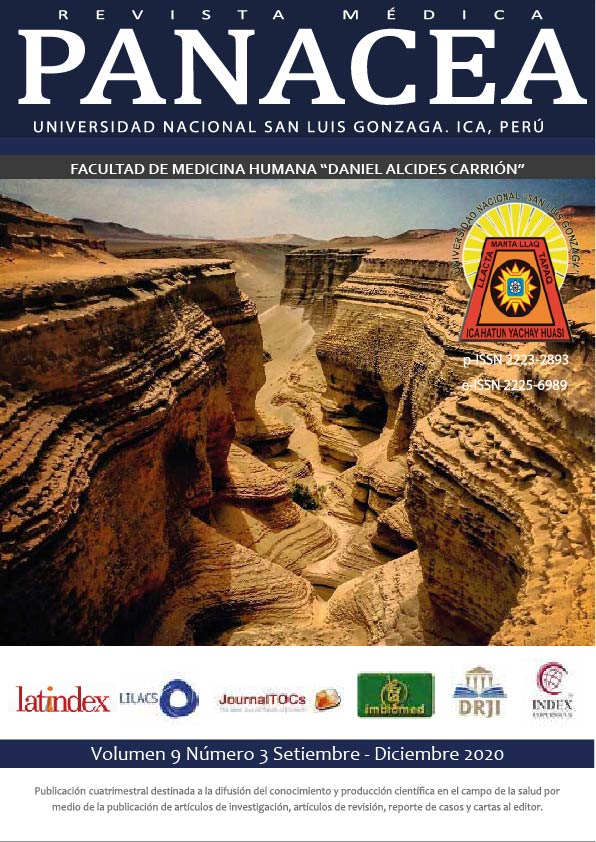PERIOPERATIVE PROTECTIVE MECHANICAL VENTILATION:VENTILATION WITHOUT WALLS.
DOI:
https://doi.org/10.35563/rmp.v9i3.371Keywords:
Volumen de Ventilación pulmonar, Síndrome de Dificultad Respiratoria del Adulto, Respiración Artificial, Frecuencia Respiratoria, Pulmón, Atelectasia PulmonarAbstract
Objective: To systematize the theoretical foundations that supports the Perioperative Protective Mechanical
Ventilation strategies. Material and Method: A bibliographic review was carried out in academic databases: Google Academic, SciELO, Lilacs, Dialnet, PubMed, Resargate, Elseviery, Road and Infomed after the use of keywords from the MESH and BIREME thesaurus. Result: Mechanical ventilation during the operative act has the potential risk of suffering damage to the ultrastructure and lung function. Volume trauma is one of the elements most strongly associated with the
appearance of respiratory distress syndrome (ARDS). Low-volume ventilation indicated a significant decrease
in mortality in patients with ARDS. Positive pressure at the end of expiration in healthy lungs reduces the
appearance of chemical mediators during intraoperative ventilation, preventing alveolus collapse and the
appearance of atelectasis. The adequate ventilation strategy recommends the use of tidal volumes of 6 to 8
ml / kg of predicted weight, respiratory rates up to 25 to maintain plateu pressure equal to or less than 20,
use of inspiratory fraction of oxygen always less than 80% and positive pressure at the end of expiration at
least 5 cm of water. Conclusion: Scientific evidence justifies the use of low tidal volume with positive pressure at the end of expiration to avoid alveolar collapse in routine ventilation, during anesthesia in patients with healthy lungs. The authors recommend estimating the tidal volume according to the predicted weight and height of the
patient.
Downloads
Published
Issue
Section
License
Copyright (c) 2020 JOSÉ ALEJANDRO PAGÁN-ARANDA , LISANET COPA-CÓRDOVA , MARÍA VICTORIA MIYARES-PEÑA , IDANIA ESPINOZA-RODRÍGUEZ , RAYDEL PÉREZ-CASTILLO

This work is licensed under a Creative Commons Attribution 4.0 International License.
Copyright is retained by the authors, who have the right to share, copy, distribute, perform, and publicly communicate their article, or parts of it, provided that the original publication in the journal is acknowledged.
Authors may archive in the repository of their institution:
- The thesis from which the published article derives.
- The pre-print version: version prior to peer review.
- The post-print version: final version after peer review.
- The final version or final version created by the editor for publication.


